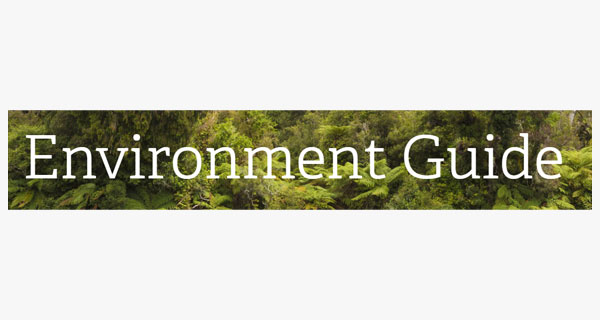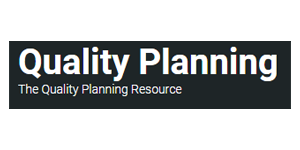Submissions
Biodiversity Policy in NZ
Major planning decisions can have a significant effect on biodiversity in a region. Big projects such as motorways and major construction projects cause large-scale habitat disturbance and fragmentation. Dams and irrigation schemes modify river habitats by altering water quality and flow volumes. Submissions provide you or your group an opportunity to present your opinions, observations, and recommendations on an impending on plan, polices or resource consent decision.
The RMA provides for indigenous biological diversity in the following sections:
- A definition of biological diversity is defined in Section 2;
‘Biological diversity means the variability among living organisms, and the ecological complexes of which they are a part, including diversity within species, between species, and of ecosystems’. - Section 30(1)(c)(iiia) states that it is a function of regional councils to control the use of land for the purpose of “maintaining and enhancing ecosystems in water bodies and coastal water”.
- Section 30(1)(ga) states that it is a function of regional councils to establish, implement and review objectives policies and methods for maintaining indigenous biodiversity.
- Section 31(b)(iii) states that it is the function of territorial councils to control the effects of the use of land on the maintenance of indigenous biological diversity.
The most recent draft National Policy Statement for Indigenous Biodiversity (NPSIB) is expected to be available for public consultation later in 2019, details on its progress can be found here.
The NPSIB is being developed alongside latest New Zealand Biodiversity Strategy. It will give guidance to local and regional authorities on biodiversity protection. Details on the new NZBS can be found here.
Currently policy guidance at national level is provided by The New Zealand Biodiversity Strategy (2000). This was prepared to meet New Zealand’s obligations under the United Nations Convention on Biological Diversity, signed in 1993. Also relevant is the 2007 ‘Statement of National Priorities for Protecting Rare and Threatened Biodiversity on Private Land’.
The full text of the statement can be accessed here. The statement sets out four national priorities for the protection of biodiversity on private land and provides additional information on how the vegetation, ecosystem and habitat types can be identified.
The national priorities are

National Priority 1:
To protect indigenous vegetation associated with land environments (defined by Land Environments of New Zealand at Level IV) that have 20 per cent or less remaining in indigenous cover.

National Priority 2:

National Priority 3:

National Priority 4:
The New Zealand Biodiversity Action Plan
The New Zealand Biodiversity Action Plan was released in October 2016 and sets the national action plan for managing biodiversity for the next four years. It sets ambitious national targets toward greater protection and sustainable use of biodiversity. The targets put forward in this action plan aim to demonstrate New Zealand’s progress towards achieving the goals of the New Zealand Biodiversity Strategy 2000-2020.
Other national Plans that have come out of this plan include:
- Predator Free 2050 – with an ambitious goal to rid New Zealand of introduced species
- War on weeds – with an aim to rid New Zealand of wilding conifers
- Battle for the Birds – this includes 1080 drops and self-setting traps to protect high risk populations of New Zealand’s native birds
The development of a comprehensive set of national environmental standards would assist in biodiversity protection. This would give clear direction to local and regional authorities on minimum allowable standards for environmental quality, ie the ‘bottom line’.
Major planning decisions can have a significant effect on biodiversity in a region. Big projects such as motorways cause large-scale habitat disturbance and fragmentation. Dams and irrigation schemes modify river habitats by altering water quality and flow volumes.
Non-Regulatory Measures
A range of measures for biodiversity protection that are non-regulatory can be provided for in regional and district plans. These include;
- Local authority direct action – eg pest control funded by regional government as part of a robust regional biosecurity strategy.
- Creation of reserves
- Assistance-e.g provide resources (research, planning, plants, construction materials) for ecological restoration projects.
- Environmental education programmes designed to raise awareness and change attitudes, targeted at specific groups of land users, or community-wide.
- Incentives to motivate action, change behaviours or encourage adoption of best practice, e.g. Taranaki Regional Council assists landowners by preparing farm management plans that promote sustainable land management. (More information at www.trc.govt.nz)
- Financial Incentives – The Local Government Rating Act 2002, makes provision for an authority to grant rates relief on sites such as habitat remnants on private land.
- Adoption of best practice guidelines (ensure that these do in fact promote environmental best practice) eg NZS 4404:2003 Land Development and Subdivision Engineering This is a performance-based guide to best practice in land developments.
- Integrated management – whole catchment approaches – Measures include providing support for Landcare groups (see landcare.org.nz/) Also providing leadership and resources for whole catchment approaches in which local government, landowners, iwi/hapu and agencies such as DOC form working partnerships.
- Property agreements – Local and regional authorities can assist landowners in the process of protecting habitats and landscape resources through covenants. This can be done through the QE11 Trust, or under the RMA, Sections 108-9. Covenants can be negotiated with land developers during the subdivision process as a condition of the consent.
The success of non-regulatory measures requires ongoing commitment from the regional and local authorities involved. Sustained political support and financial support are both needed. The Local Government Long Term Council Community Plan (LTCCP) process becomes important here, as communities can ask for financial resources to be allocated to these measures by making submissions each year on the annual plan, and every 3 years on the LTCCP.
Community Acceptance of Biodiversity Protection Measures
Inevitably, tensions arise in communities over biodiversity measures. There can be adverse reaction to plan rules from landowners, who consider rules on activities such as earthworks, land disturbance or vegetation clearance to be overly restrictive on their property rights.
On the other hand, outcomes will be uncertain if biodiversity protection relies too heavily on voluntary measures and landowners’ discretion.
Through the process of plan review, communities must negotiate a balance that is both politically acceptable, and effective in achieving good outcomes. Active environmental advocacy is a vital component in this process.
Submission and Planning Links

Environment Guide

Ministry for Environment

Quality Planning

Environmental Protection Authority
Checklist for examining Plans and Policies
Guideline on Strategic Planning for Biodiversity
Protecting rare and Threatened Native Biodiversity
Join the Forum
Any individual, community group or organisation interested and committed to protecting and restoring biodiversity can be a member of the Forum. It is free to join. You will get an invite to Forum events and receive information on biodiversity workshops, useful biodiversity information, access to other members for sharing knowledge and ideas and help with restoration projects. So contact us and become a member for no cost.

